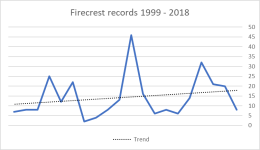KenM
Well-known member
I probably haven't time for yew but my hollies have been in 20 years and are pretty decent. 👍 😁
Replace yew with Ivy!, which is probably better anyway and it doesn’t hang around on the growth front. I can also attest to it attracting Redwings….+ Naumann’s. 🤩👍






